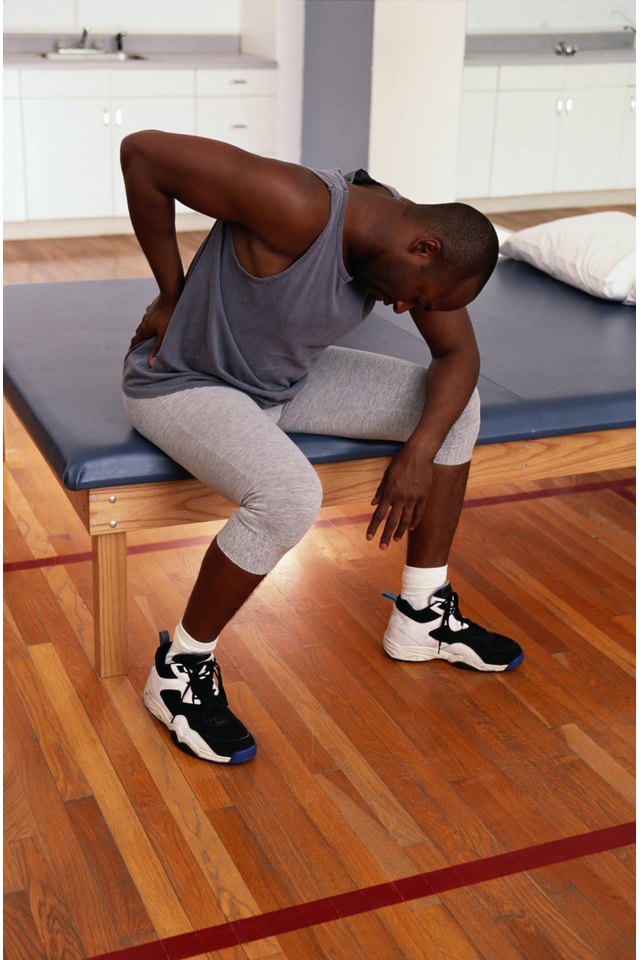Is It Important to Strengthen the Erector Spinae?

Erector spinae is the term for the group of muscles around your lower back. It starts around your pelvis and sacrum and runs up your back, parallel with your spine. Its main job is to extend your spine, as when you stand upright from a bent-over position. It also provides rotation and bilateral flexion: bending to the side. While many people concentrate on training their show muscles, such as the chest, biceps and shoulders, the erector spinae are just as important, as strong spinal muscles are key to performance and avoiding injury.
Back Pain
Back pain affects 8 in 10 people at some point in their lifetime, according to the U.S. National Library of Medicine. Lower back pain can often be linked to weak spinal erectors. A study in the "Spine Journal" showed a significant correlation between weak, underactive erector spinae muscles and an increase in lower back pain. Stronger erector spinae can better support your trunk and torso and decrease or prevent back pain.
Athletic Performance
A strong lower back is key to improving your athletic performance. No matter what sport you plan, your erector spinae muscles have to be strong to provide enough support and stability. Because they're placed under high levels of stress for long periods during training and in competition, your erector spinae muscles are prone to injury, says Kim Goss, strength coach and editor of "Bigger, Faster, Stronger" magazine. Strong erector spinae muscles not only make you more competitive, they also reduce your injury risk.
Strength
Strong erector spinae muscles will increase your total body strength. According Mike Robertson, powerlifter and owner of Indianapolis Fitness and Sports Training, you need a strong lower back to boost your overall strength, particularly when it comes to the powerlifting exercises -- squats, deadlifts and bench presses, or the clean and jerk and snatch in Olympic weightlifting. Your erector spinae acts as one of the primary movers in these exercises and also provides core stabilization.
Training
Beginners should start with simple exercises such as back extensions and prone back raises. Do two sets of 10 to 15 repetitions of each of these twice per week. More advanced trainers should switch between two erector spinae workouts, advises strength coach Charles Poliquin, author of "Modified Strongman Training." In session A, perform a deadlift with an extended range of motion, such as snatch-grip or podium deadlifts, for six sets of three to eight reps. In session B, perform three sets of 12 to 15 reps on Romanian deadlifts and three sets of 10 to 15 back extensions. Leave at least three days rest between workouts.
References
- ExRx: Erector Spinae
- Medline Plus: Back Pain
- The Spine Journal: The Association of Low Back Pain, Neuromuscular Imbalance, and Trunk Extension Strength in Athletes.
- Postural Sport Performance: How to Armor-Plate Your Lower Back
- Robertson Training Systems: Accessory Onslaught #3: The Deadlift
- Charles Poliquin: Putting Meat on the Spinal Erectors
Writer Bio
Mike Samuels started writing for his own fitness website and local publications in 2008. He graduated from Peter Symonds College in the UK with A Levels in law, business and sports science, and is a fully qualified personal trainer, sports massage therapist and corrective exercise specialist with accreditations from Premier Global International.
